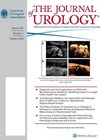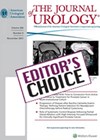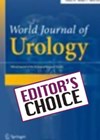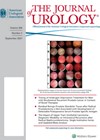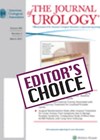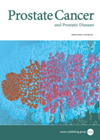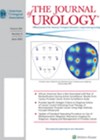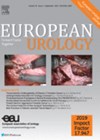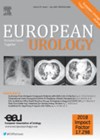
Journal Reviews
Refining management of non-visible haematuria
The optimal evaluation of non-visible haematuria (NVH) continues to be debated, with competing interests of avoidance underdiagnosis and the harms of over-testing. Current National Institute for Health & Care Excellent (NICE) guidance recommends referral for patients ≥60 years with NVH....
Factors and time to conversion from prostate cancer active surveillance to treatment
Active surveillance is the standard of care for men with low-risk and selected men with favourable intermediate risk prostate cancer. The aim is to reduce the morbidity and mortality of overtreatment of non-clinically significant prostate cancer. A significant proportion progress...
Active surveillance for small renal masses in younger patients
Active surveillance (AS) is discussed as an option for renal masses <2cm in patients with significant competing risks for mortality. This multicentre data from the US seeks to fill an important gap in current guidelines for provision of this option...
Homo digitalis during COVID-19?
The COVID-19 pandemic has affected all aspects of our lives. We have seen huge changes in the health service, medical practice and hospital working. Many urology meetings – national and international – were cancelled and seminars and courses have become...
Risk factors for BC after minimally invasive RNU
Bladder cancer (BC) after radical nephroureterectomy (RNU) has an approximate incidence of 20-50%. This contemporary multicentre study will inform the ongoing debate on risk factors for BC after minimally invasive RNU and how it may be prevented. Three hundred and...
Increased use of active surveillance for men with intermediate risk prostate cancer
The optimal management of men with intermediate risk prostate cancer remains unclear and continues to be debated. The authors interrogate the US National Cancer Database for 176,122 men diagnosed with intermediate risk prostate cancer between 2010 and 2016. Of these...
The importance of assessing frailty in patients prior to radical prostatectomy
This large-scale retrospective study evaluated the short-term postoperative outcomes in patients with localised prostate cancer treated with radical prostatectomy (RP). Both body mass index (BMI) and Charlson comorbidity Index (CCI) are well established indicators of adverse outcomes post major surgery,...
Testicular masses – can the testis be spared?
The standard practice for testicular masses confirmed on ultrasound has been to offer an inguinal orchidectomy, on the presumption that the mass represents testicular cancer. The growing use of scrotal ultrasound for various indications has led to an increase in...
Call for standardised reporting of adverse events
This article will be of immense benefit to all of us involved in mortality and morbidity meetings and Clinical Governance, especially registrars and junior members of the team. The authors present data from the UK, USA and Europe. In prostate...
Testosterone supplementation after prostatectomy – journey from bad to good
The role of androgens in the pathogenesis of prostate cancer is quite complex and is not entirely clear yet. Despite several reports suggesting testosterone use is safe in patients diagnosed with prostate cancer, many clinicians are still reluctant to use...
Trade-offs between risks and benefits of localised prostate cancer treatments – the COMPARE study
We know little about the trade-offs men make when considering the oncological and functional outcomes of individual treatment options for localised prostate cancer, and decisions are often influenced by physician opinion. The likely compromised functional results are viewed as a...
COVID-19: cancer and corticosteroids
Under the prevailing COVID-19 crisis, this article is well worth reading. The current World Health Organization (WHO) guidance is not to start steroids in cancer cases, but there is no clear evidence of risks with steroids in cancer patients having...

